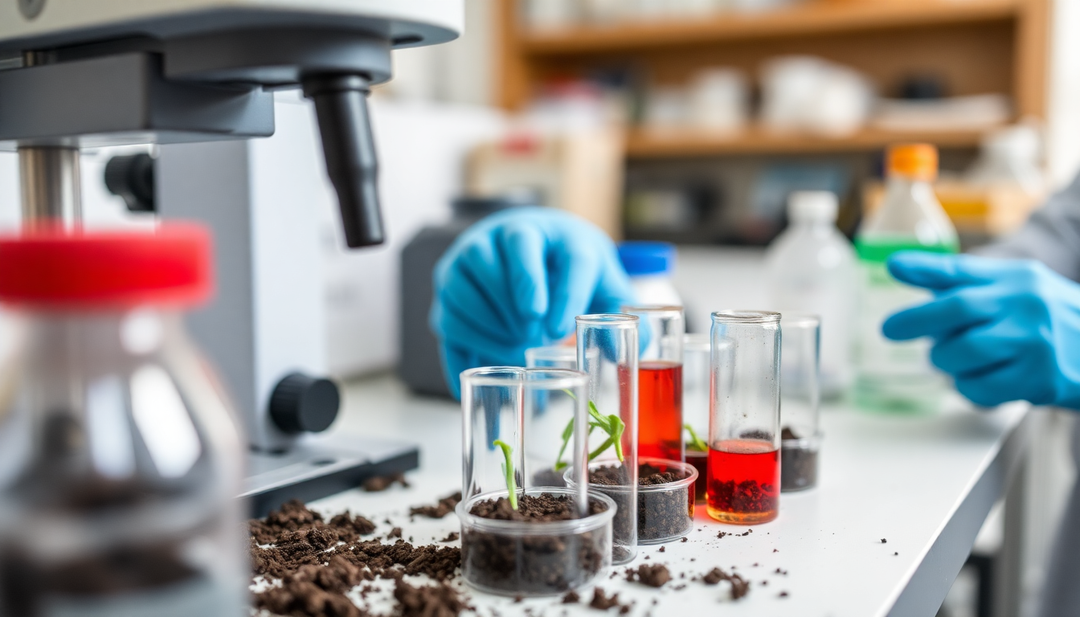Soil Analysis: Complete Guide to Pollution Diagnosis and Associated Costs in 2025

Introduction
In 2025, soil testing has become a crucial step in assessing the quality of our environment. Pollution assessments are essential to ensuring the safety of land, water, and infrastructure. In this article, we'll explore the soil testing process, the associated costs, and the importance of these assessments for individuals and businesses.
Why is it important to analyze the soil?
First of all, soil testing plays a fundamental role in protecting public health and the environment. More specifically, here are some reasons why these tests are necessary:
- On the one hand, they allow the identification of potential pollutants. Indeed, soils can contain contaminants such as heavy metals, hydrocarbons, or even pesticides, which can have harmful effects on health.
- On the other hand, they are used to assess risks to human health. For example, soil contamination can affect the quality of drinking water and the safety of cultivated food, posing a direct risk to consumer health.
- They are also essential for preparing construction or development projects. Before starting work, it is essential to know the condition of the soil in order to avoid pollution problems during construction.
- Finally, they help ensure compliance with environmental regulations. Many laws require soil analyses before any real estate transaction or development project.
The pollution diagnosis process
The soil analysis process is broken down into several steps, each of which has its importance:
- First, a preparation phase is required. This involves assessing the site's historical information, including researching previous land use, industrial activities, and the types of chemicals used.
- Second, sampling is a crucial step. This involves taking soil samples from different levels and locations on the site to obtain a complete picture of the soil condition.
- Next comes laboratory analysis. This phase involves testing the samples to detect potential contaminants. Different techniques, such as chromatography or mass spectrometry, can be used depending on the pollutants being tested for.
- Then, the interpretation of the results is necessary to analyze the data and assess risks. This includes comparing the results with the soil quality standards established by the competent authorities.
- Finally, a report is written to detail the findings and recommendations. This document is essential for informing stakeholders and guiding decisions.
Soil Analysis : Case Studies
To illustrate the importance of soil testing, let's look at some case studies:
- First, an industrial site revealed high levels of heavy metals, prompting remediation measures. The analyses made it possible to identify the most affected areas and plan interventions.
- Second, in a residential area, tests showed nitrate contamination of the groundwater. As a result, filtration systems were installed to ensure the safety of residents.
- Finally, at an agricultural site where pesticides had been used for decades, analyses revealed chemical residues. In response, a cleanup strategy was implemented to restore soil quality.
Costs associated with pollution diagnosis
Soil testing costs vary depending on several factors:
- First, the type of analysis required strongly influences the price. Basic analyses are less expensive than those requiring advanced or multiple tests.
- Then, the area of the land to be analyzed plays a decisive role. The larger it is, the higher the cost of sampling and analysis.
- Finally, the complexity of the necessary tests can lead to high costs. Some pollutants require specific analysis methods, which can be expensive.
Practical tips for effective analysis
To ensure an effective soil analysis, here are some recommendations:
- First, use certified professionals to ensure the quality of the analyses.
- Second, ensure that the analysis methods comply with current standards.
- Next, ensure transparent communication with stakeholders.
Finally, schedule the analysis at a convenient time, taking into account seasonal factors.
Conclusion
In conclusion, soil analysis is an essential tool for ensuring environmental safety. Therefore, in 2025, it is crucial to stay informed about the latest advances and understand the diagnostic process to better manage pollution risks. In short, prevention is often less expensive than remediation, and a good analysis can make all the difference. For any questions or analysis services, contact Pouryère. Together, let's protect our environment and ensure a healthy future for future generations.



